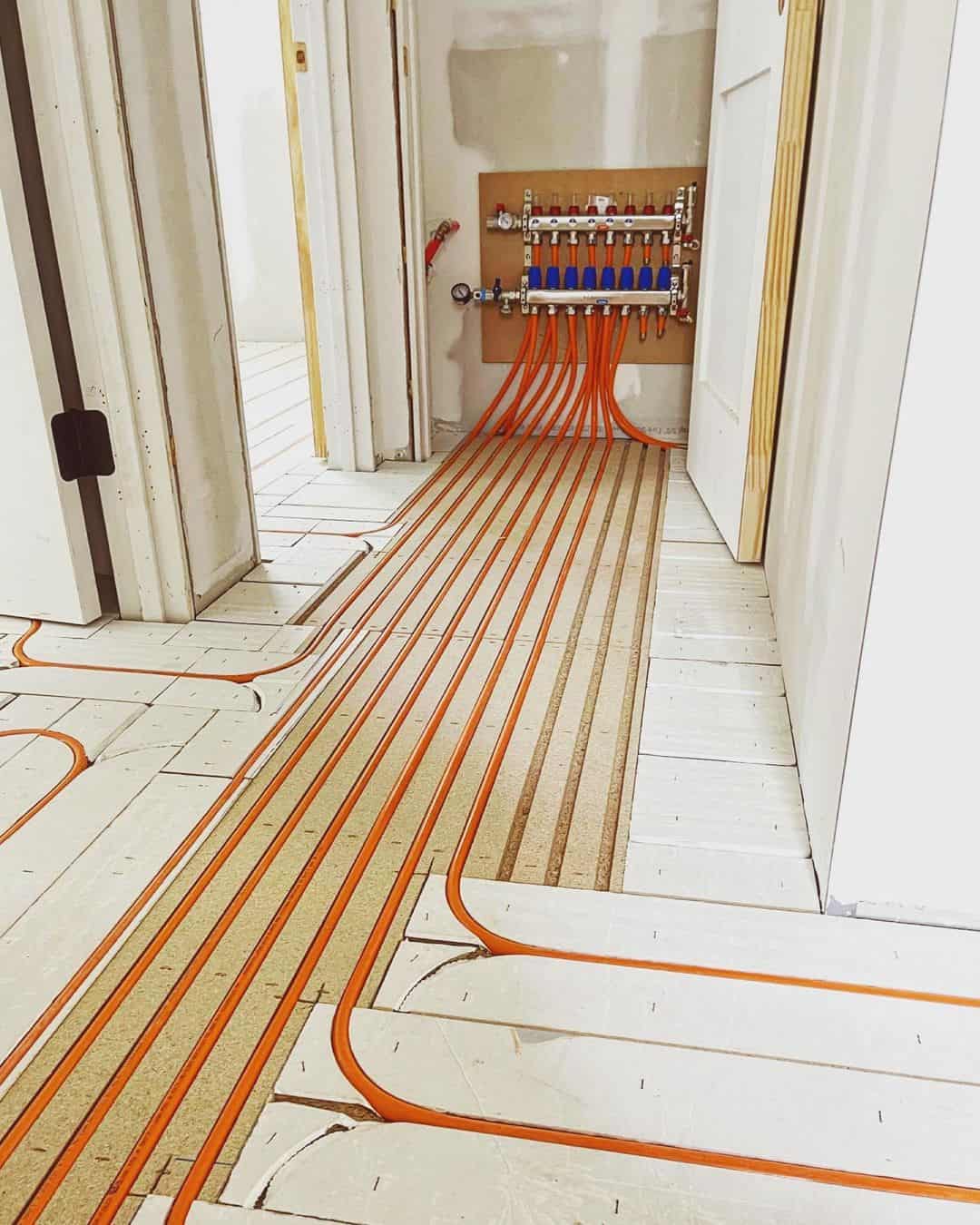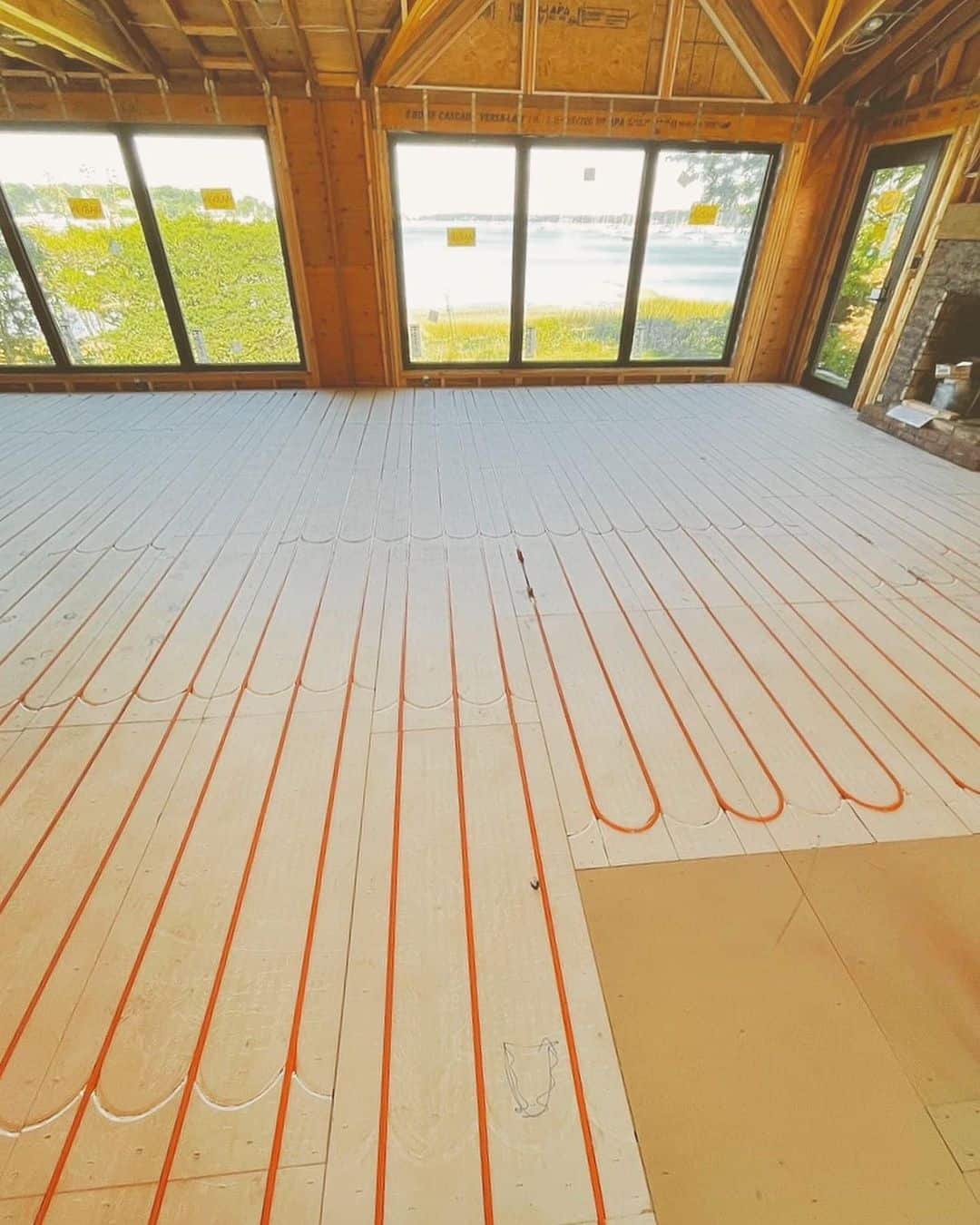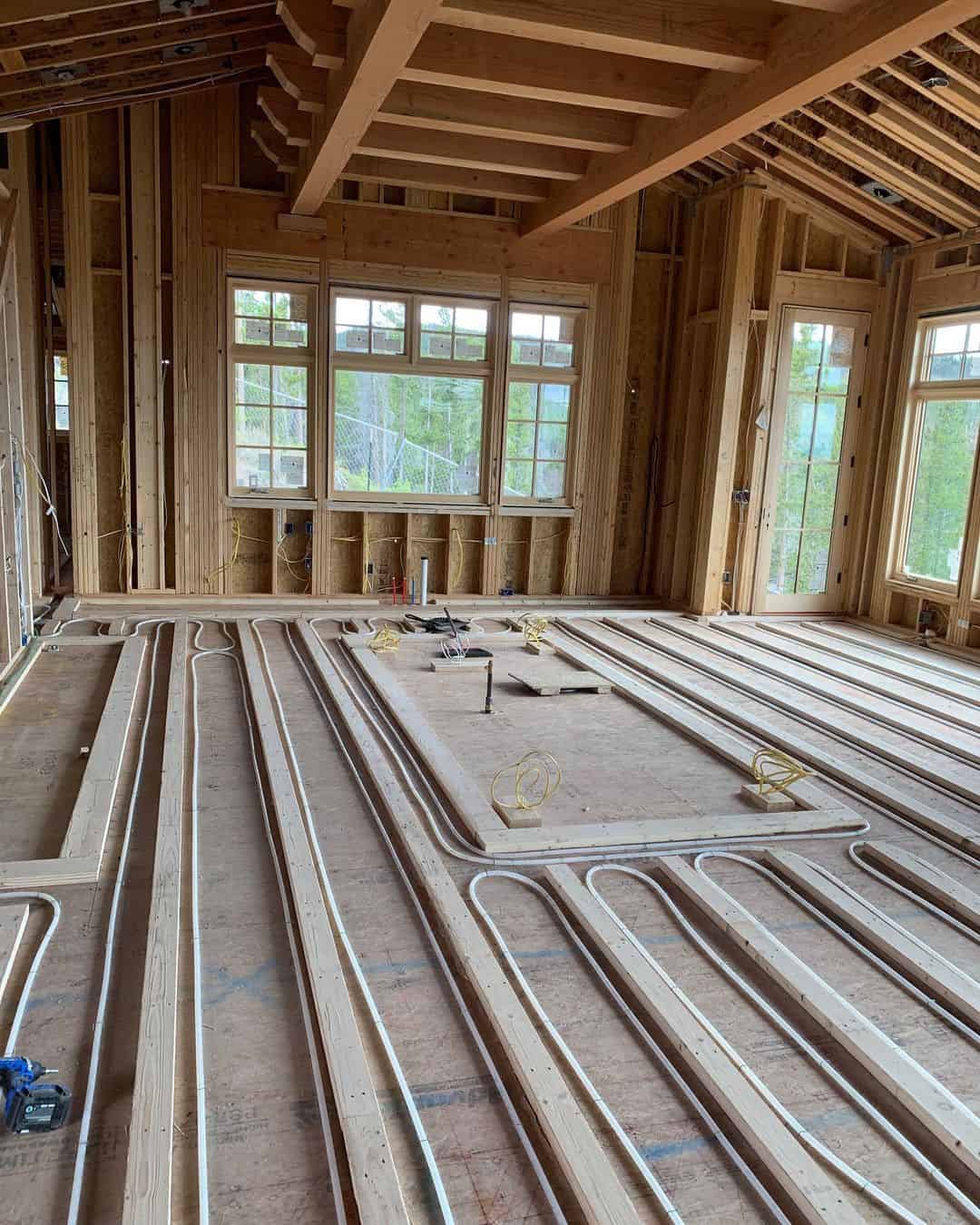Once considered a luxury, radiant floor heating is becoming increasingly common today. The heating wires under the floorboards keep your feet warm and comfortable during the chilly winter months. You don’t have to tip-toe your way to the kitchen or bathroom anymore.
But how much does radiant floor heating cost? Does it fit in your budget, or will it make you go bankrupt? In today’s post, we will answer this question in great detail.
From average price ranges to factors that affect them, here is everything to calculate the exact radiant floor heating cost!
Table of Contents
Why Choose Radiant Floor Heating?
Typically, people use the forced-air system to keep the house warm. This involves heating the air in a furnace and distributing it throughout the house in a network of ducts. While this is effective in keeping you warm, it has two major problems:
- Loss of heated air as it travels through the ducts and pipes. This makes the furnace work harder and uses more energy than needed.
- The air causes dust and allergens to stir up in the environment. This is a health concern for people with allergies and asthma.
Radiant floor heating systems solve both of these problems by supplying heat via thermal radiation. It heats the floorboards and wall panels of the house. Once these are warm, the heat transfers from them to the surrounding objects.
Eventually, the whole room becomes warm and toasty to walk around. It’s just like how an excessively hot oven makes the kitchen hot. However, the difference in the radiant heating system is that the heat comes upwards from the floor.
This allows more even heating than a standard forced-air system. You can also control the heating in different house zones using the connected thermostats. Some other benefits of radiant floor heating include:
- Low Maintenance – once installed, radiant floor heating systems don’t require monthly checkups or repairs. In fact, it has a long 30 to 45-year guarantee. That’s way more than a standard heating system.
- Increase in Home Value – since radiant floor heating is considered to be a luxury feature, most buyers are likely to pay more for it. So, even if you spend thousands on the installation, the return on investment will make it worth the money.
Factors That Affect Radiant Floor Heating Costs

Radiant floor heating costs can vary from hundreds to thousands. The exact amount will depend on the following factors.
1. Type of Radiant Floor Heating
There are 5-main types of radiant floor heating systems. Each functions the same way, but the energy source is different. Here’s a brief overview of them:
- Hydronic ($6 to $20 per square foot)
This uses hot water to keep the floorboard warm. First, a boiler heats up the water. It then pumps it through the pipelines that transfer the heat to the floor above. You will notice that the majority of other types are modified versions of hydronic floor heating.
- Electric ($8 to $15 per square foot)
As the name suggests, the electric radiant floor heating system uses electric cables to transfer the heat to the floor. It’s typically easier to install and doesn’t require any additional equipment like hydronic systems. But you should expect the monthly electricity bills to increase.
- Propane ($6 and $18 per square foot)
The propane radiant floor heating system includes a boiler fueled by propane. The gas burns to make the boiler function, which then heats the water running through the pipelines. Since propane is a natural gas, this is not a very eco-friendly option.
- Geothermal ($7 to $17 per square foot)
Most homeowners don’t opt for geothermal heating because of its inefficiency. The average water temperature should be between 160 to 180 degrees to make the floor warm. However, since this type of radiant floor heating relies on a geothermal source (energy derived from within the Earth’s surface, like steam), the water doesn’t get much hot.
- Solar ($18 to $25 per square foot)
This is the most expensive type because it uses large solar panels. They first convert sunlight into electricity and then heat up the water in the pipelines under the floor. But, if you want to live an eco-friendly life, there’s no better option than this.
2. Flooring
The type of flooring also affects the total radiant floor heating costs. For example, vinyl has an average rate of $2 to $15 per square foot, and concrete floors have $4 to $6 per square foot. However, marble is the most expensive, with a rate of $12 to $60 per square foot.
These price differences simply exist because some floor materials take a long time to heat up. So, if you have hardwood floors with a carpet, expect it to warm up later than thin vinyl flooring. This means they also require a better, reinforced heating system.
Another factor worth considering is the floor size. As a general rule, larger rooms will have higher radiant floor heating costs than smaller rooms. To reduce the cost, many people only get radiant floor heating systems installed in key house areas like the kitchen and bathrooms.
3. Installation Charges
The installation of a radiant floor heating system will require professional assistance. You may see a lot of DIY videos showing you how to install radiant flooring yourself. But let’s be practical.
This procedure has several technical aspects that cannot be fulfilled without in-depth knowledge and years’ worth of experience. You will also need professional wiring and equipment. So, even if you know what to do, you will have to purchase expensive tools that you will probably never use again.
The total expenses would equal the labor costs of a professional service. With that said, you can still get a cheaper installation by comparing different companies in your locality and choosing the one that promises the best value for money.
4. Location
The reason why we have listed this as a separate factor is that professionals will charge you transportation costs separately. So, the further you are located from their headquarters, the more you will be charged for transporting the materials.
A great tip to save money is to find a professional contractor in your area. Since they will already be close to you, the fees will be lower too.
5. Additional Costs
In most cases, you will already have a boiler or water heater in place. It will need minor modifications to be changed into a radiant floor heating system.
However, if you are getting a complex version installed (like solar) or expanding the system to the entire house, additional equipment will be required. This may include solar panels, larger heaters, or upgraded thermostats. Your professional installer will let you know the exact requirements after the initial inspection.
So, How Much Does a Radiant Floor Heating Cost?

On average, a radiant floor heating cost ranges from $1600 to $6000. But, as discussed, the accurate installation cost depends on a number of factors.
If you get a hydronic radiant floor heating system installed in a 2400-square-foot home, the cost can vary from $14,000 to $48,000. Alternatively, if you choose an electric floor heating system, the price range increases between $19,000 to $36,000.
However, if you want the heating system installed in specific areas, the total costs won’t be so scary. You should expect to pay as low as $300 for a 50-square-foot bathroom. The prices would be around $600 to $900 for a 120-square-foot bedroom.
Are There Any Other Costs to Consider?
Yes, you need to consider the operating costs of radiant floor heating to determine whether it’s the best decision for you financially or not.
Typically, this type of heating is much more energy-efficient than the traditional air-heated system or heating appliances. For a 100-square-foot area, you should expect to pay around $1 to $5 every month. The average in most cases is $3 for a complete 24 hours.
Comparatively, traditional heating systems can cost up to $20. This is because the mass (floor) stays heated for a longer time than air. So, your radiant floor system doesn’t have to work hard and runs at 6 to 8 degrees less than the standard.
FAQs

1. Is radiant heat cost-effective?
Yes, radiant electric systems are very cost-effective in the long run. You can expect to save up to 15% on monthly energy bills because of its efficient heat distribution methods. And if you plan to sell your home, expect to add thousands more to the value of this luxury feature.
2. How long does radiant floor heating last?
Radiant floor heating systems are quite durable. Their average lifespan is around 30 years. But with proper maintenance, they can last up to 45 years!
3. Can radiant floor heat cause a fire?
Generally, radiant floor heating systems are safe and reliable. They don’t explode or cause the concrete slab to crack. However, they may cause things to catch fire if the temperature reaches the ignition point.
Last Words
All in all, radiant heated flooring costs $1600 to $6000 for installation. Most people get an average cost of $3800. The operating costs are around $3 to $7 per month for a 50 to 120-square-foot area.
However, these are just rough estimates. If you want a more accurate range, consider the radiant heating type, flooring, location, and other factors we have discussed above. Usually, a professional will do all these calculations when you call them for an initial consultation.